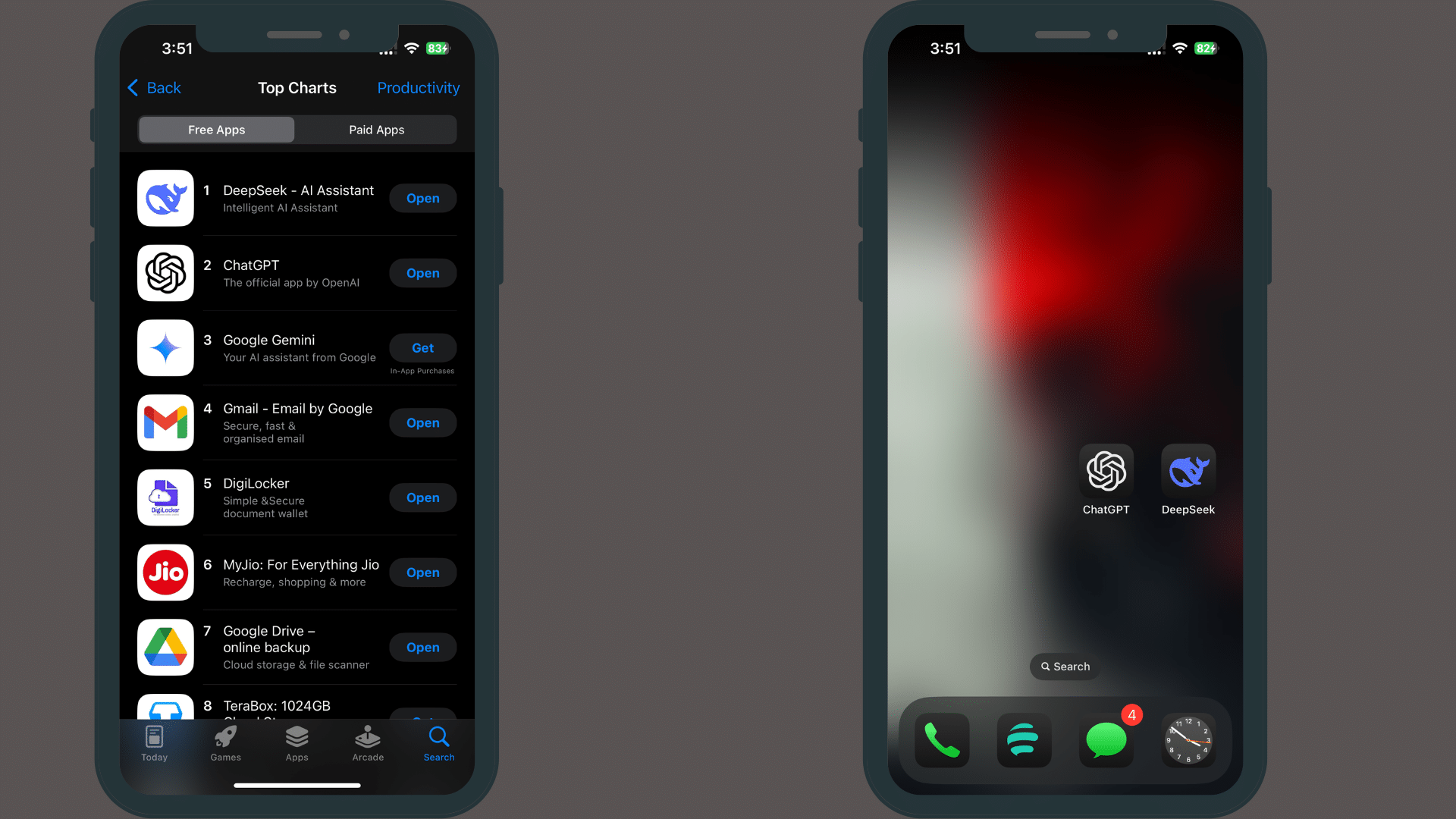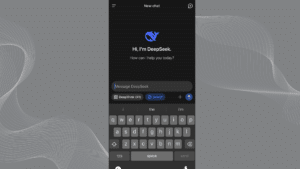
Key Highlights
- DeepSeek, a Chinese AI startup, experienced a large-scale cyberattack on Jan. 27. In response, the platform limited new user registration while addressing the issue.
- The incident highlights the vulnerabilities of rapidly growing platforms, especially AI ones, making them prime targets for cybercriminals.
- DeepSeek’s open-source large language model (LLM), lauded for its performance comparable to top models such as OpenAI, has gained significant attention, attracting users and malicious actors alike.
- The extent of the attack remains unclear. Experts suggest potential motives ranging from service disruption and competitive intelligence gathering to exploiting the platform for malicious activities.
- The incident emphasizes the importance of implementing robust cybersecurity measures, particularly for platforms handling sensitive user data, and underscores the evolving threat landscape in the age of AI.
Introduction
The world of cybersecurity is constantly changing. Now, AI labs are being targeted by bad actors. Chinese AI startup DeepSeek faced a large-scale cyberattack on Jan. 27. The attack disrupted its services, raising concerns about the security of user data and the integrity of the platform.
The Genesis of the DeepSeek Hack
DeepSeek is the new kid in the artificial intelligence landscape. The company faced a cyber attack, disrupting its services. On their website, DeepSeek shared an update with users that said. “Due to large-scale malicious attacks on DeepSeek’s services, registration may be busy. Please wait and try again. Registered users can log in normally. Thank you for your understanding and support.”
The cyberattack mainly affected new user registrations. This meant new users could not join the platform. However, current users could still log in and enjoy the service without problems.
Unpacking the Timeline: The Initial Breach
The exact timing of the cyberattack is still unclear. However, a message on DeepSeek’s website on Jan. 27 said that the company was stopping new sign-ups because they were dealing with “large-scale malicious attacks.” This first breach made a significant impact on the tech community and raised concerns about how secure the most advanced AI systems are.
Later, the company updated the message to say new user sign-ups could start again, but there might be some challenges. Existing users could still sign in without any issues.
Though DeepSeek tried to downplay the attack, the incident showed that fast growth and a good reputation could lead to unwanted interest from those looking to take advantage of weak spots.
Identifying the Vulnerabilities: How DeepSeek Was Compromised
DeepSeek has not shared exact details about the attack. However, cybersecurity experts have identified some possible weaknesses. Since DeepSeek is an open-source platform, anyone can see its code. This allows bad actors to find and use vulnerabilities. Also, with the quick rise in DeepSeek’s popularity, it may have become a target for those looking to disrupt services or access important user information.
It’s possible that the attackers wanted to steal information about DeepSeek’s technology and training data, which is invaluable.
The incident has sparked talks in the tech world about the risks of open-source AI models. Some say that having open access to the code can improve security because it allows for better transparency and checks from the community. However, others point out that open-source models can put organizations at greater risk without proper security.
Securing Open Source: Lessons from the Software Supply Chain Revolution
The DeepSeek incident shows how critical cybersecurity is in open-source software, with more companies opting to use it.
This incident should remind businesses and developers to focus on security at all stages of software development. This includes creating and reviewing code, deploying, and maintaining it. To reduce risks linked to open-source software, it’s important to employ strong security measures, carry out detailed assessments for vulnerabilities, and create a culture where everyone is aware of security issues.
Combat Threats to Technical Projects: 3 Hacks for Soft Skills
Making technical projects successful in an increasingly connected world requires more than technical skills. You also need good soft skills to handle challenges well. Here are three important tips to improve your soft skills:
- Get good at communication: Good communication is key to any project’s success. Share your ideas clearly, listen to different views, and create a space where everyone can talk. This helps ensure everyone understands each other.
- Encourage teamwork: Build a teamwork spirit in your group by sharing knowledge, respecting different opinions, and working together towards shared goals. This helps solve problems and creates a positive and active workplace.
- Improve your ability to adapt: Technology is constantly changing, so adaptability is very important. Welcome change, stay open to new ideas and keep looking for ways to learn more.
5 Strategies to Combat Ransomware and Ensure Data Security in Microsoft 365
Protecting your organization’s valuable data from the ransomware threat requires a multi-faceted approach, especially in cloud environments like Microsoft 365. Implementing these five strategies can bolster your defenses and ensure data security.
| Strategy | Description |
| Enable Multi-Factor Authentication (MFA) | Implement MFA for all user accounts to add an extra layer of security and make unauthorized access significantly more difficult. |
| Educate Your Workforce | Conduct regular cybersecurity awareness training to educate employees about ransomware threats, phishing scams, and best practices for data protection. |
| Regularly Back Up Your Data | Implement a robust backup and recovery strategy that includes offsite or cloud-based backups to ensure data can be restored in case of an attack. |
| Keep Software Up-to-date | Regularly update all software, including operating systems, applications, and security software, to patch vulnerabilities and mitigate risks. |
| Restrict Access to Sensitive Data | Implement the principle of least privilege, granting access to sensitive data only to authorized personnel and monitoring activity closely. |
The Aftermath of the Cybersecurity Breach
The DeepSeek cyberattack has exposed weaknesses in AI systems and the urgent need to implement strong security measures.
Though alarming, the incident reveals a key lesson: we must act early to deal with possible weaknesses and strengthen our defenses. As technology develops faster than ever, it is important that we change the way we handle cybersecurity.
Immediate Impact on Users and Data Security
The cyberattack on DeepSeek immediately impacted new user registrations. Users who wanted to join could not create accounts, stopping them from using the AI chatbot. However, existing users did not face any issues as they could still log in and avail services offered.
DeepSeek clarified that no sensitive user data was revealed during the attack. Still, this event made users worry about how secure their information was. Users share a lot of personal and professional details with AI platforms. Thus, strong data security is important.
DeepSeek’s Response and Damage Control Efforts
DeepSeek reacted quickly to the cyberattack. The company posted the news on its website and informed users about what had happened and what it was doing to fix it.
To reduce the effect on new sign-ups, DeepSeek paused this process for a while. They also improved their security while dealing with the issue. The company’s fast response sought to avoid troubles for current users and kept the operations running.
We do not yet know what the attack will mean in the long run. However, DeepSeek’s fast and open communication helped mitigate the impact. This event showed how important it is to communicate well and act decisively when faced with cyberattacks.
Conclusion
To conclude, the DeepSeek hack shows the importance of cybersecurity. It protects sensitive information and maintains users’ trust. The timeline of the breach shows how crucial it is to identify problems early and act fast. Adopting strategies against ransomware and keeping data safe on platforms like Microsoft 365 are necessary. Going forward, staying alert and improving cybersecurity features to reduce risks and protect our digital assets is crucial.
Frequently Asked Questions
What is DeepSeek AI?
DeepSeek is an AI lab based in China. It focuses on creating large language models (LLMs). These models are trained using large amounts of data. The models can generate human-like text, translate languages, and perform other tasks.
How did attackers exploit DeepSeek’s vulnerabilities?
The exact weaknesses that the attackers exploited are not known yet. However, DeepSeek’s open weights model and possible security issues might have allowed room for the large-scale cyber attack.
What measures has DeepSeek taken post-breach?
DeepSeek has taken steps to improve its cybersecurity in response to the breach. This may involve making the network more secure, fixing weak spots, and completing security checks.
Can users protect their data from such breaches?
While users can’t directly control the security of platforms like DeepSeek, they can still protect their personal data. Strong and unique passwords and multi-factor authentication are crucial to keeping information safe.
What are the implications of the DeepSeek hack for AI security?
The DeepSeek incident shows AI security is crucial. There are concerns about how it might impact national security and the success of tech projects. The situation drives home the need for better protection and cooperation between countries to keep AI technologies safe.





